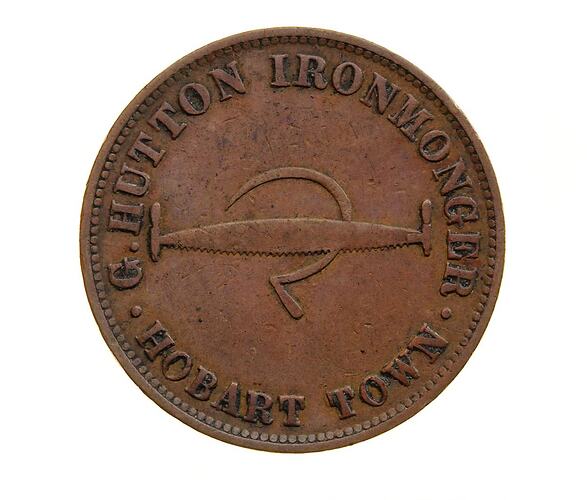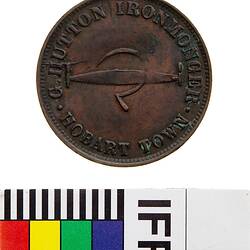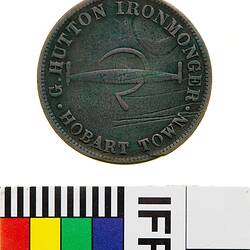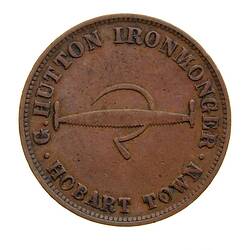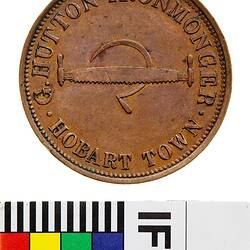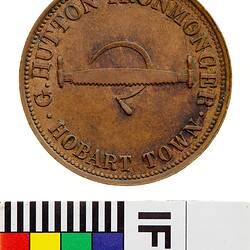George Hutton was born in the southern Scottish town of Harwick. He migrated to Australia in 1831 on the Stirling Castle, arriving in Sydney on 1 October. Among the passengers on the ships was the famous Presbyterian minister and Pplitician the Rev. Dr. John Dunmore Lang, who was returning to Australia having recruited emigrants from the Scottish highlands.
George Hutton departed Sydney several weekes later on the Vibelia, arriving in Hobart on 25 November 1831. Hutton obtained a 21-year lease on a block of land at the corner of Elizabeth and Collins Streets, where he established a business dealing in cabinet-making, building, contracting and ironmongery. He ran this broad construction, fabrication and home goods business until the 1851 gold rush in Victoria tempted his workers to seek their fortunes. In the years that followed he concentrated on the ironmongery business, which he ran until his death in 1865. Following his death the business was continued by his son-in-law James Browne Harrrower.
Hutton was involved in establishing a wide range of institutions in Hobart, including the Savings Bank, the Ragged School and the City Mission, as well playing an 'instrumental' role in the construction of the Chalmers Free Church in Bathurst Street where he was the ruling elder until his death.
The business was advertised in Walch's Almanac and Guide to Tasmania in 1863 and 1864. In 1863 Hutton took out a small text advertisement, which simply listed his business and the address 'Elizabeth and Collins Street, Hobart Town.' In 1864 he took out a full page advertisement with two illustrations (a hearth and a plough).
The 1864 advertisement also included the text 'Sole agent for Singer and Co.'s Sewing Machines,' which commenced importing into Australia in 1864. To be the only person selling Singer machines in Hobart Town would presumably have been a lucrative agency, considering the popularity and expense of Singer sewing machines.
Tasmanian Government records, indexed in the Tasmanian Colonial Index, 1816-1889, include a George Hutton on Jury Lists between 1835 and 1858, and a G Hutton as a convict employer between 1839 and 1841.
The Tasmanian Archives Office holds a copy of a will by a George Hutton, dated 1865.
George Hutton issued a penny and a halfpenny token, struck for him by Heaton and Sons of Birmingham, circa 1860.
References:
Gardner, F. (1970). 'Trade Tokens and the Firms Which Issued them', originally published in The Australian Storekeepers and Traders Journal circa 1910-1914, republished in The Australian Coin Review, May, p. 11.
Andrews, A., Australasian Tokens and Coins, p. 60.
Archives Office of Tasmania, Index to Wills & Letters of Administration from 1824
Tasmanian Colonial Index, 1816-1889, Search results for 'George Hutton' and 'G Hutton'.
Advertisement, Walch's Tasmanian Almanac and Guide to Tasmania for 1863, advertisements p. 24.
Advertisement, Walch's Tasmanian Almanac and Guide to Tasmania for 1863, advertisements p. 81.
Colonial Times, Hobart, 30 November 1831
Mercury, Hobart, 22 October 1864
More Information
-
Keywords
-
Localities
-
Authors
-
Article types
